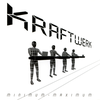

Here to follow content related to Star Trek, Linux, open-source software, and anything else I like that happens to have a substantial Lemmy community for it.
Main fediverse account: @f00fc7c8
This profile is from a federated server and may be incomplete. Browse more on the original instance.
Episode Discussion | Doctor Who | 1x04 "73 Yards"
LoglineLanding on the Welsh coast, the Doctor and Ruby embark on the strangest journey of their lives. In a rain-lashed pub, the locals sit in fear of ancient legends coming to life....
KDE's Amarok 3.0 Music Player Released After Six Year Hiatus - Now Ported To Qt5 (www.phoronix.com)
Released back in March of 2018 was the Amarok 2.9 music player for this KDE project. Shipping today is finally Amarok 3.0 as the first major release in six years and now ported to Qt5 and KDE Frameworks 5.
Good DAWS and VSTs for linux
Hi everyone,...
Looking for a distro to dual boot with Win 11
I currently have a win 11 machine and would like to dual boot with Linux. Looking at some of the different options, it seems many aren’t recommended for dual booting. Are there any that are?
Question: How does one open source their stuff?
Hey there....
Describe an episode in the worst possible way
I’ll start: a naked guy complaining to his host that there’s less light than advertised.
How being FOSS fan/advocate annoy you at work/school?
Started my first job, it’s a helpdesk. It looks that I get tickets and try to help people on the other side, have build some PCs and am at first week....
"Mrs. Flood" speculation thread
This is one of the other major topics this season, so let’s engage in some wild speculation so we can be proven to be idiots by episode 8....
Are there still any versions of Linux sold in a box like in the 90s / 2000s?
I’ve tried to find them to no avail. I’m guessing the box sets just aren’t made anymore, but I figured it’s worth asking in case there’s some obscure one out there somewhere....
Stable, consistent workstation recommendations?
First, thanks for reading and commenting....
*Best* video for explaining the Fediverse to a total noob?
Suggestions?
How do I enroll the liquorix kernel? I can't seem to find it anywhere. Or the default kernel for that matter. (i.imgur.com)
Preview ‘Star Trek: Discovery’ Episode 507 With New Images And Clip From “Erigah” (trekmovie.com)
Neofetch is Dead! Here are 7 Alternatives for Your Linux System (itsfoss.com)
Plasma KDE for Framework 16 Laptop
Edit: Kubuntu22.04 seems to work. Thanks for your help....
deleted_by_author
Is there any online service that I could use in order to have a private Debian repository? (libranet.de)
Or maybe a way to use existing cloud services like Google Drive or OneDrive or Dropbox for this purpose?...